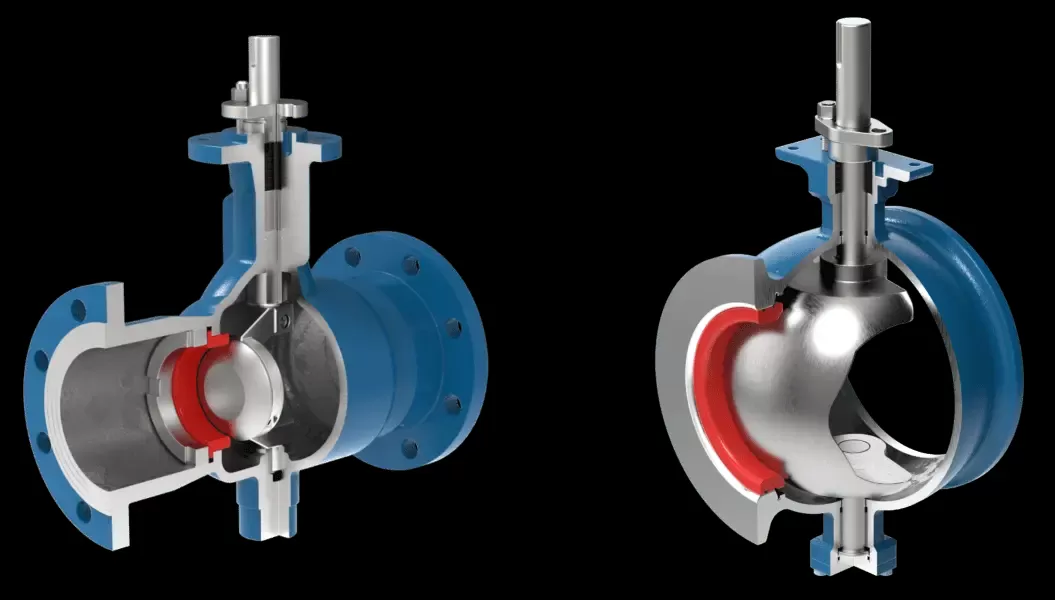Notifications

6 minutes, 19 seconds
-99 Views 0 Comments 0 Likes 0 Reviews

Introduction
Eccentric rotary control valves are engineered for precise and reliable flow control in a wide range of demanding industrial applications. By combining rotary motion with an eccentric plug design, these China Control Valves offer superior sealing and minimal leakage. They are especially well-suited for handling difficult fluids—such as erosive, coking, or abrasive media—and can be used for both throttling control and on/off service. This guide explores the design, operation, and advantages of eccentric rotary control valves and highlights their effectiveness across various industries.
What Is an Eccentric Control Plug Valve?
An eccentric control plug valve is a rotary valve in which the plug moves along an offset or "eccentric" path. This motion means the plug does not contact the seat until it nears the fully closed position. During shutoff, the plug cams into the seat, creating a dynamic seal that ensures tight closure.
Because of this specialized movement, eccentric plug valves are often referred to as rotary globe valves. Their design minimizes wear, provides dependable sealing, and delivers consistent performance in harsh operating environments—particularly where traditional valve types fall short.
Key Applications of Eccentric Rotary Control Valves
Erosive Fluids
These valves are highly effective in managing erosive media such as slurries, corrosive chemicals, or abrasive liquids. Their eccentric motion limits plug-seat contact, reducing wear and extending service life.
Coking Fluids
In petroleum refining, where fluids can harden and form coke deposits, eccentric rotary valves ensure continued flow and reliable control under difficult conditions.
Slurry Handling
Used extensively in mining and mineral processing, these valves handle slurries—liquid-solid mixtures—efficiently. Their rugged construction and metal trim help reduce erosion and improve durability.
High-Pressure Applications
Industries like power generation and pulp & paper often operate under high pressure. Eccentric rotary control valves are well-suited for such environments thanks to their strong sealing capabilities and leak-resistant performance.
Reverse Flow Advantage
For erosive applications, flow direction is critical. Eccentric rotary valves perform best when installed with the shaft positioned upstream—where the fluid flows against the direction of the shaft's motion.
Benefits of Reverse Flow Configuration:
Reduced Erosion: High-velocity flow is confined to the outlet port area, protecting internal valve components.
Enhanced Durability: Seat rings and retainers are often made from erosion-resistant materials for improved longevity.
Simplified Maintenance: Strategic component protection leads to easier servicing and longer intervals between maintenance cycles.
Valve Structure and Functionality
Body & Flow Path
Designed for efficiency, the valve body features a streamlined, low-resistance flow path that delivers higher capacity than conventional double-seat valves. Despite the increased capacity, the overall valve weight is approximately one-third less than similar-sized alternatives.
Rotary Operation
Rotary motion enhances stuffing box sealing, reducing leak potential and promoting longer-lasting performance.
Sealing Mechanism
A key feature of this valve is its tight shutoff capability. A flexible arm connected to the spool experiences elastic deformation under actuator pressure, pressing the plug firmly against the seat to ensure minimal leakage.
Leakage Prevention
Because the plug only contacts the seat during final closure, friction and wear are minimized. This design helps achieve lower leakage rates compared to ball or butterfly valves.
Lower Thrust Requirements
Unlike ball or butterfly valves that need higher actuator force to close, eccentric rotary valves require less thrust, improving energy efficiency and reducing actuator stress.
Durability
With robust metal trims and specialized seals, these valves are built to withstand high pressure, temperature, and abrasive fluids—ensuring reliable operation even under severe service conditions.
Advantages of Eccentric Rotary Control Valves
Superior Sealing: The eccentric closing motion enhances seal integrity and reduces wear over time.
Minimal Leakage: Precision sealing leads to less leakage and better system efficiency.
Application Versatility: Suitable for erosive, coking, high-pressure, and slurry environments across many industries.
Low Maintenance: Fewer wear-prone components result in reduced downtime and servicing costs.
Energy-Efficient Operation: A low-pressure drop design and minimal actuation force contribute to overall system efficiency.
These qualities make eccentric rotary control valves an ideal solution for critical flow control applications in industries like energy, chemical processing, mining, and refining.
Conclusion
Eccentric rotary control valves are an essential solution for managing complex, aggressive, and high-pressure fluid systems. Their unique eccentric plug movement enables tight shutoff, reduced leakage, and long-term durability, making them a superior alternative to conventional valve designs in demanding environments.
With proven performance in sectors such as mining, oil refining, power generation, and pulp & paper, these valves stand out for their precision control and low maintenance needs. As industries continue to push operational boundaries, the reliability and adaptability of eccentric rotary control valves ensure their continued importance in modern flow control systems.

